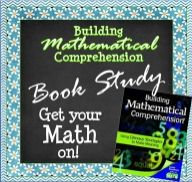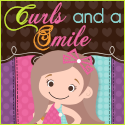 |
| Mrs. Crofts' Classroom |
Deb Diller's book Math Work Stations was the inspiration for how I set up my workshop. I use 10-12 stations, depending on the number of students I have, so that two or three students work at each station. (Note: I have 12 stations, but not necessarily 12 different activities. I often have 2 tubs with the same activities and materials.) I like this because I think it keeps the noise level down and is a little more controlled. Once I have a handle on my students' abilities and needs, I create the partner pairs who will work together for several weeks. Other teachers have had great success with other formats similar to CAFE in language arts where the students complete activities in different strands like measurement, fact fluency, using math tools, etc. (See this blog post about BUILD.) Some teachers have their students work in groups and rotate through stations, seatwork and small group work. All of these systems have merit; you have to choose what works best for you!
- Create at least one tub that always has some sort of graphing/data activity to complete. My plan is to eventually turn this into an investigation station where the students are actually gathering data.
- Avoid getting too caught up in "themed" stations. Just because I bought a really cute packet of math centers for Halloween does not mean that every activity in that pack is right for my class. I need to remember to choose activities that match the curriculum and the needs of my students.
- Continue to develop and use stations with similar formats. One idea that I have is to have one tub that always has activities using number cards. The number range will vary, and I can use Donna's wonderful themed number cards for variety! (Math Coach's Corner on TPT) Another tub will utilize Marcy Cook's number tile task cards.
- Create "I Can" charts for each new station. I was really good about doing this at the beginning of the year, but slacked off mid-year.
- Try for more differentiated activities within the stations. Keep the higher levels of Bloom's taxonomy in mind when planning activities. Are the students analyzing and creating? I really want to utilize technology here!
One thing I have learned is that you have to introduce stations slowly and really practice the procedures. For the first few days, all we do is free exploration of materials while we practice working quietly, getting our math tubs and cleaning up. Then I add a task to each tub of manipulatives like "Take a number card and create a set using the manipulatives" or "Create a pattern." Next I introduce a simple game, and we practice playing it with a partner. I also like to do number tubs from Math Their Way (Chapters 7-8) during these first few weeks. Here's a link to Math Their Way info, but basically the students work with a given number and use the manipulatives to represent their number and show combinations. Then they draw or make a model of their work. For example, one of the stations has toothpicks. Students make arrangements of 5 or whatever number they are working with and then glue the toothpicks on construction paper and write a sentence to describe their work- 3 toothpicks and 2 toothpicks make 5 toothpicks. I also include counting books at each station for early finishers.
After about 3 weeks the students are fairly independent so I can start pulling some small groups. Again, you have to really teach the procedures and expectations of how to work when the teacher is with a group. Have a plan for the restroom, questions, supplies, etc. Basically, I tell my kids you don't interrupt the teacher unless there's blood or vomit! (And I've had to explain that picking the scab off of a mosquito bite is NOT what I mean by blood!) Some teachers wear a crown or use signs to remind their students not to interrupt when they are with a small group.
Math workshop has become one of my favorite times during the day. It takes a lot of work to get it going, but once it's up and running, you will love having time to work with groups and individuals!





















